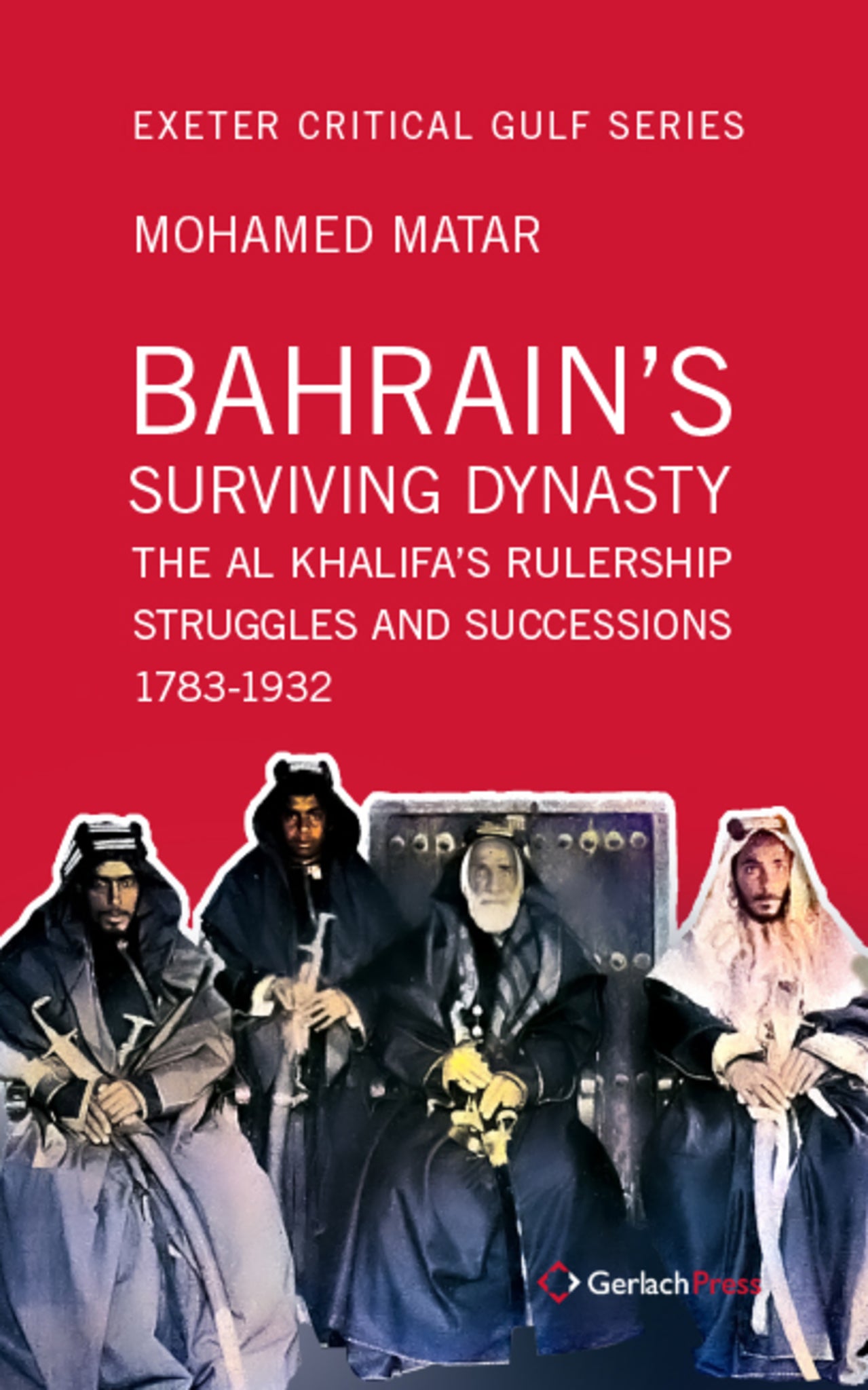We're sorry. An error has occurred
Please cancel or retry.
Bahrain's Surviving Dynasty
Regular price
£115.00
Sale price
£115.00
Regular price
£0.00
Unit price
/
per
Sale
Sold out
Re-stocking soon
This book provides valuable insights into how the Al Khalifa tribe of Bahrain managed to shape and maintain their patrimonial rule for over 240 years, ultimately emerging as one of the most prevail...
Read More

Some error occured while loading the Quick View. Please close the Quick View and try reloading the page.
Couldn't load pickup availability
- Format:
-
30 June 2023

The Al Khalifa of Bahrain is a long-standing dynasty that has established dispute resolution measures to overcome intra-tribal ambitions for power and wealth, replacing extra-constitutional rulership succession with primogeniture. Since their control over Bahrain began in 1783 until the British withdrawal from the Gulf in 1971, the Al Khalifa introduced ten senior ruling shaykhs, seven of whom experienced turbulent successions, and faced in-house rivalries and power-seeking disputes.
This book provides valuable insights into how the Al Khalifa tribe managed to shape and maintain their patrimonial rule for over 240 years, ultimately emerging as one of the most prevailing and enduring royal families in the region today. It delves into their strategies and tactics for overcoming local contexts, external challenges, and intra-tribal rivalries.
The book is an essential read for anyone interested in the history and politics of Bahrain and the Gulf region.
This book provides valuable insights into how the Al Khalifa tribe managed to shape and maintain their patrimonial rule for over 240 years, ultimately emerging as one of the most prevailing and enduring royal families in the region today. It delves into their strategies and tactics for overcoming local contexts, external challenges, and intra-tribal rivalries.
The book is an essential read for anyone interested in the history and politics of Bahrain and the Gulf region.

Price: £115.00
Pages: 286
Publisher: Gerlach Press
Imprint: Gerlach Press
Series: Exeter Critical Gulf Series
Publication Date:
30 June 2023
ISBN: 9783959941662
Format: Hardcover
BISACs:
HISTORY / Middle East / General, Middle Eastern history, SOCIAL SCIENCE / Islamic Studies, POLITICAL SCIENCE / History & Theory, Islam, Politics and government

Preface
Note on the Text
Introduction
Historical Background (Mid-1600s-1783)
Seceding from the 'Utubi Confederation (1783-1826)
The Rise and Development of In-House Troubles (1827-69)
Containing the Chaos and Instituting a Shared-Leverage Feudal System (1869-1900)
The Escalation of the British Intervention and the Revival of the Baharna (1900-23)
Substituting the Shaykhly Prerogatives and Diminishing the Ruling Clique (1923-32)
Conclusion and Outlook
Appendices
Bibliography
Notes
Note on the Text
Introduction
Historical Background (Mid-1600s-1783)
Seceding from the 'Utubi Confederation (1783-1826)
The Rise and Development of In-House Troubles (1827-69)
Containing the Chaos and Instituting a Shared-Leverage Feudal System (1869-1900)
The Escalation of the British Intervention and the Revival of the Baharna (1900-23)
Substituting the Shaykhly Prerogatives and Diminishing the Ruling Clique (1923-32)
Conclusion and Outlook
Appendices
Bibliography
Notes



